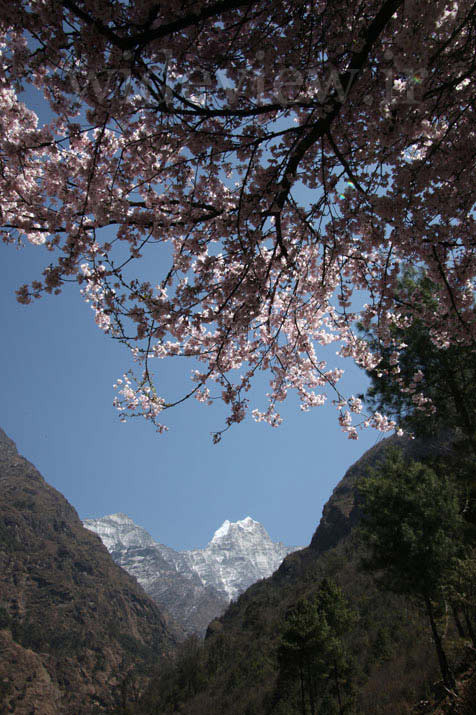Photo: 'Spring in the Himalayas' by Hamid Mohammadnazar

Spring in the Himalayas
| Average rating: 5.0 | (use stars to vote) |
The Himalayas, also Himalaya, (pron.: /ˌhɪməˈleɪ.ə/ or /hɪˈmɑːləjə/; Sanskrit, hima (snow) + ālaya (dwelling), literally, "abode of the snow"[1]) is a mountain range in Asia separating the plains of the Indian subcontinent from the Tibetan Plateau. The Himalayan range is home to some of the planet's highest peaks, including the highest, Mount Everest. The Himalayas include over a hundred mountains exceeding 7,200 metres (23,600 ft) in height. By contrast, the highest peak outside Asia—Aconcagua, in the Andes— is 6,961 metres (22,838 ft) tall.[2] The Himalayas have profoundly shaped the cultures of South Asia. Many Himalayan peaks are sacred in both Hinduism and Buddhism. Besides the Greater Himalayas of these high peaks there are parallel lower ranges. The first foothills, reaching about a thousand meters along the northern edge of the plains, are called the Sivalik Hills or Sub-Himalayan Range. Further north is a higher range reaching two to three thousand meters known as the Lower Himalayan or Mahabharat Range. The Himalayas abut or cross five countries: Bhutan, India, Nepal, China, and Pakistan, with the first three countries having sovereignty over most of the range.[3] The Himalayas are bordered on the northwest by the Karakoram and Hindu Kush ranges, on the north by the Tibetan Plateau, and on the south by the Indo-Gangetic Plain. Three of the world's major rivers, the Indus, the Ganges, and the Tsangpo-Brahmaputra all rise near Mount Kailash to cross and encircle the Himalayas. Their combined drainage basin is home to some 600 million people. Lifted by the subduction of the Indian tectonic plate under the Eurasian Plate, the Himalayan range runs, west-northwest to east-southeast, in an arc 2,400 kilometres (1,500 mi) long. Its western anchor, Nanga Parbat, lies just south of the northernmost bend of Indus river, its eastern anchor, Namcha Barwa, just west of the great bend of the Tsangpo river. The range varies in width from 400 kilometres (250 mi) in the west to 150 kilometres (93 mi) in the east.